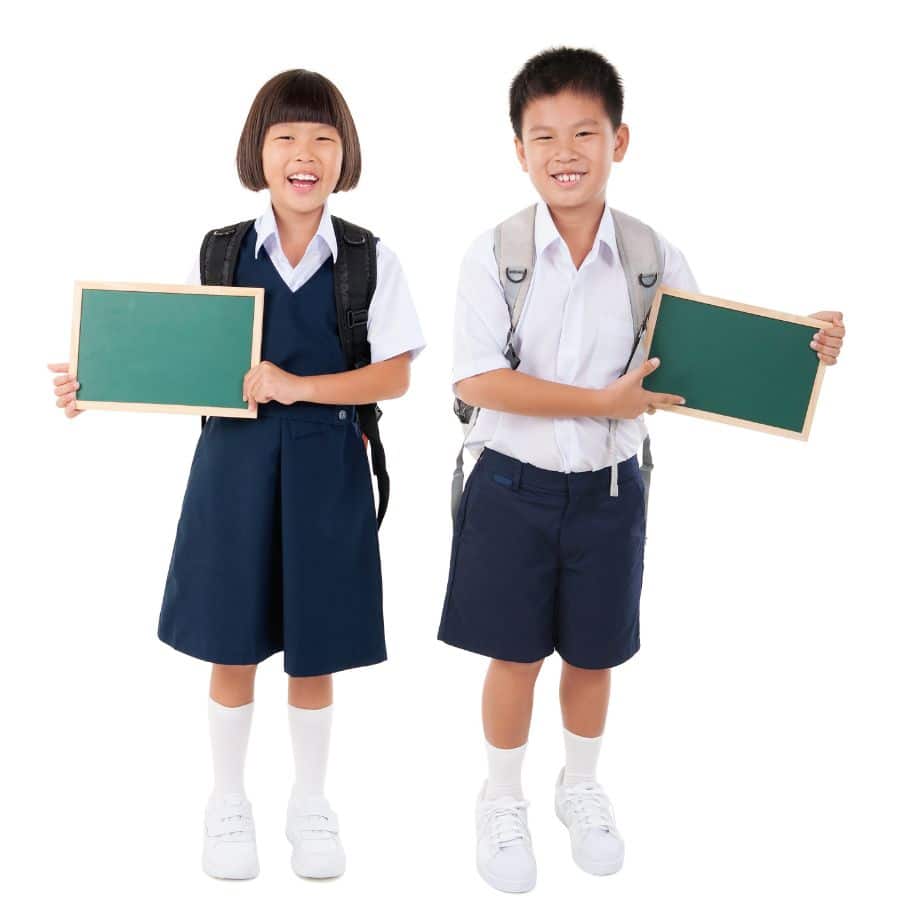Singapore’s education system, like that of the majority of countries around the world, is divided into stages. These are the stages:
- Preschool
- Primary School
- Secondary School
- Pre-University
- University
The remaining educational levels have their own assessments to judge students’ academic performance, with the exception of Preschool education, which does not have an examination. As a result, grades are assigned. The grading method differs, however, because each school stage has its own assessment system. The most important grading systems in the education system are those employed at the primary, secondary, junior college and university levels.
Grading System for the Primary Level
Previously, primary schools in Singapore used an “Achievement Band” grading system. However, the method has been phased out, and the grading scheme has been replaced with a more favorable “Overall Grade” plan. Students are graded according to this system:
Primary 3 to 4
| Grade | Percentage |
| Band 1 | 85% and above |
| Band 2 | 70% to 84% |
| Band 3 | 50% to 69% |
| Band 4 | Below 50% |
Primary 5 to 6 standard stream
| Grade | Percentage |
| A* | 91% and above |
| A | 75% to 90% |
| B | 60% to 74% |
| C | 50% to 59% |
| D | 35% to 49% |
| E | 20% to 34% |
| U | Below 20% |
Primary 5 to 6 foundation stream (PSLE)
| Grade | Percentage |
| Grade 1 | 85% and above |
| Grade 2 | 70% to 84% |
| Grade 3 | 50% to 69% |
| Grade 4 | 30% to 49% |
| U | Below 30% |
System of Secondary Level Grading
Secondary schools in Singapore utilize a variety of grading schemes. However, the majority of Secondary Schools use the Singapore-Cambridge GCE “O” level examination grading scheme. The greatest possible grade under this grading system is A1, while the lowest possible grade is F9. The many types of grading in Singapore secondary schools are listed below.
Singapore-Cambridge GCE “O” Level Examination
| Grade | Percentage | Grade Description |
| A1 | 75% and above | Distinction |
| A2 | 70% to 74% | Distinction |
| B3 | 65% to 69% | Merit |
| B4 | 60% to 64% | Merit |
| C5 | 55% to 59% | Credit |
| C6 | 50% to 54% | Credit |
| D7 | 45% to 49% | Sub-Pass/Fail |
| E8 | 40% to 44% | Fail |
| F9 | Below 40% | Fail |
GPA
Grade Point Average, or GPA as it is more widely called in Singapore, is used to grade pupils in exams in several Secondary Schools. It’s computed by summing all of the student’s grades and then dividing the total by the number of topics he or she takes. The GPA is calculated by rounding the result to two decimal points. Promotion usually necessitates a minimum GPA of 2.0.
The GPA is frequently different from one school to the next. The GPA tables for Raffles Girls’ School and Raffles Institution (Secondary) are as follows:
Though GPA varies from one school to the next, the differences are modest.
| Grade | Percentage | Grade point |
| A | 80% to 100% | 4.0 |
| A | 70% to 79% | 3.6 |
| B | 65% to 69% | 3.2 |
| B | 60% to 64% | 2.8 |
| C | 55% to 59% | 2.4 |
| C | 50% to 54% | 2.0 |
| D | 45% to 49% | 1.6 |
| E | 40% to 44% | 1.2 |
| F | Below 40% | 0.8 |
Though GPA differs from school to school, but the difference is minor.
Normal (Academic) {NA} Levels Grades
| Grade | Percentage |
| 1 | 75% and above |
| 2 | 70% to 74% |
| 3 | 65% to 69% |
| 4 | 60% to 64% |
| 5 | 50% to 59% |
| U | Below 50%, considered Un-graded, or failed. |
Normal (Technical) {NT} Levels Grades
| Grade | Percentage |
| A | 70% and above |
| B | 65% to 69% |
| C | 60% to 64% |
| D | 50% to 59% |
| U | Below 50%, considered Un-graded, or failed. |
O Levels Grades
| Grade | Percentage |
| A1 | 75% and above |
| A2 | 70% to 74% |
| B3 | 65% to 69% |
| B4 | 60% to 64% |
| C5 | 55% to 59% |
| C6 | 50% to 54% |
| D7 | 45% to 49% |
| E8 | 40% to 44% |
| F9 | Below 40% |
Grades D7, E8, and F9 are all considered failing grades.
A Merit, a Pass, or an Ungraded grade may be given to students taking Mother Tongue Syllabus B.
Secondary School Grading Methods
Secondary schools in Singapore are the country’s first educational institutions to use an “Overall Grade” grading system for academic disciplines. Secondary school grading systems range from a single grading system to a mixed grading system.
The minimal GPA required for admission to a local institution is 3.5-3.8; however, this varies by course. The minimum GPA requirement for an international university is 2.0-3.0, which is slightly lower than the requirement for a local university.
The mixed grading system denotes that some subjects follow one grading system while others follow a separate grading system.
It’s worth noting that non-academic topics like Religious Knowledge, Moral Education, and Music are graded using the A, B, C, or D alphabetical grading system.
Grading System for Junior College
| Grade | Percentage |
| A | 70% and above |
| B | 60% to 69% |
| C | 55% to 59% |
| D | 50% to 54% |
| E | 45% to 49% (passing grade) |
| S | 35% to 44% (denotes standard is at AO level only), grade N in the British A Levels. |
| U | 35% and below |
In addition, students who participate in Special Papers (which were last presented in2006) are given a grade of 1 (Distinction), 2 (Merit), or U. (Unclassified).
Students that take H3 Subjects (which were first offered in 2006) will receive a Distinction, Merit, Pass, or Ungraded.
Polytechnics Grading System
| Grade | Percentage | Grade Description | Grade Point |
| AD | Distinction (Top 5% score in the subject) | 4.0 | |
| A | 80% and above | Excellent | 4.0 |
| B | 75% to 79% | Very good | 3.5 |
| B | 70% to 74% | Good | 3.0 |
| C | 65% to 69% | Above Average | 2.5 |
| C | 60% to 64% | Average | 2.0 |
| D | 55% to 59% | Pass | 1.5 |
| D | 50% to 54% | Borderline pass | 1.0 |
| F | Less than 50% | Fail | 0 |
For entrance into a local university, the minimum GPA required is 3.5-3.8; however, it varies from course to course. As for the overseas universities, the minimum GPA required is 2.0-3.0; the criterion is slightly lower than that of the local university. Check out our university assignment tutoring here.
University Level Grading System
| Grade | Scale | Grade Description |
| I | 70% and above | First Class Honors |
| II | 65% to 69% | Second Class Honors, First Division |
| II | 60% to 64% | Second Class Honors, Second Division |
| III | 50% to 59% | Third Class Honors |
| Less than 50% |
At various levels of schooling in Singapore, various grading systems are used. Even within the same stage, the grading system may differ from one stream to the next. This page gives an overview of the many grading systems used in Singapore’s educational system.
To learn more about the education system in Singapore, check out this link
Check out our various primary and secondary tuition curriculums here!
Need help with your university assignments? Check out our help service
Looking for coding/programming and digital art classes?








